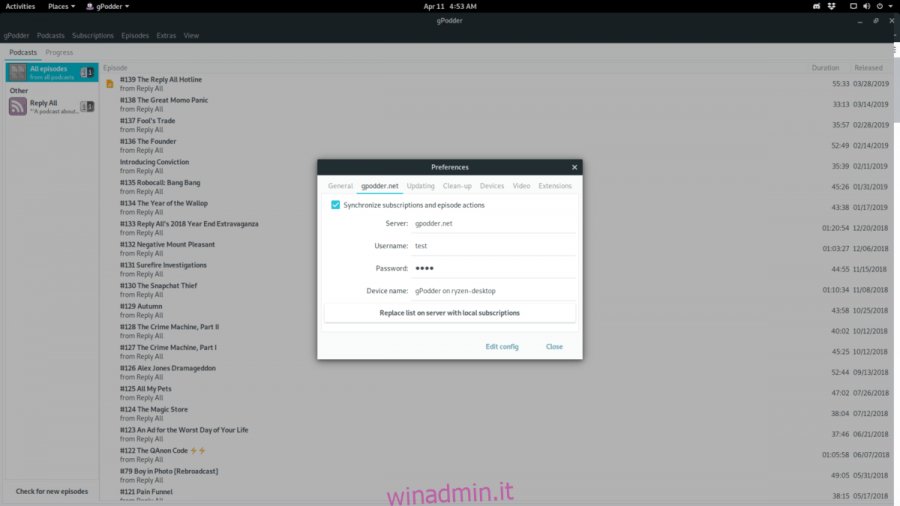

GPodder has numerous configuration options to set its behaviour: how it plays podcasts, handles downloads, and many others.
Gpodder password download#
This will download feedparser and mygpoclient and place them into src/ - bin/gpodder and bin/gpo will be able to pick these modules up from there, so all you really need is Python >= 3.5 on your system. If you have checked out the source, but are missing dependencies, you can make the source checkout a self-contained gPodder setup with all dependencies by running: GPodder is designed to also run directly from a source checkout (the maintainer uses it like that all the time):
Gpodder password install#
In general, if you get gPodder via Git or the source tarball, simply run it directly from the source checkout and don’t try to install it system-wide (use your distro’s packages for system-wide installation). If you want to try the latest version, see the instructions at: Run from Git
Gpodder password windows#
Changing the gPodder Home Folder on Windows.Changing the downloads folder location and the gPodder Home folder.gPodder Home Folder and Download location.Time stretching (making playback slower or faster).Keeping downloaded episodes (Archiving).

Removing episodes when deleted from gPodder.Appending episodes to the current playlist.Importing subscriptions from an OPML file.

When information applies to older versions of gPodder, this will (should) be explicitly stated. Things written here might not exist or work as described in older versions of gPodder. Next = Math.floor(Math.random() * sounds.In general, the assumption is that you are running the latest version of gPodder 3. set event handlers on all audio objectsĭocument.getElementById(current + '').classList.remove('playing') ĭocument.getElementById(current + '').classList.remove('paused') ĭocument.getElementById(current + '').classList.add('playing') ĭocument.getElementById(current + '').classList.add('paused') The remainder of the array from FFTW contains frequencies above 10-15 kHz.Īgain, I understand this is probably working as designed, but I still need a way to get more resolution in the bottom and mids so I can separate the frequencies better. However, since FFTW works linearly, with a 256 element or 1024 element array only about 10% of the return array actually holds values up to about 5 kHz. These should be somewhat evenly distributed throughout the spectrum when interpreting them logarithmically. I am also applying a Hann function to each chunk of data to smooth out the window boundaries.įor example, I test using a mono audio file that plays tones at 120, 440, 1000, 5000, 1500 Hz. I have tried with window sizes of 256 up to 1024 bytes, and while the larger windows give more resolution in the low/mid range, it's still not that much. But with so little allocation to low/mid frequencies, I'm not sure how I can separate things cleanly to show the frequency distribution graphically. I understand that audio is logarithmic, and the FFT works with linear data. Everything works, except the results from the FFT function only allocate a few array elements (bins) to the lower and mid frequencies. I run an FFT function on each buffer of PCM samples/frames fed to the audio hardware so I can see which frequencies are the most prevalent in the audio output. I am trying to build a graphical audio spectrum analyzer on Linux.


 0 kommentar(er)
0 kommentar(er)
